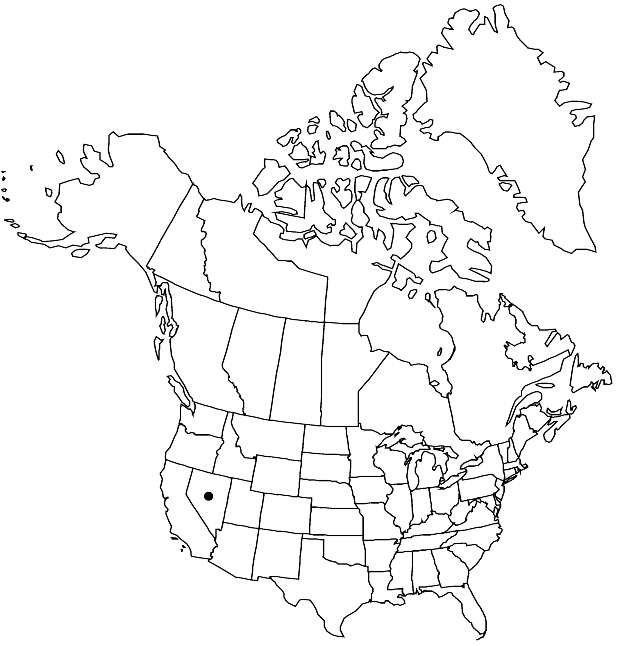Boechera ophira
Novon 13: 387. 2003.
Perennials; long-lived; (cespitose); sexual; caudex often woody. Stems usually 1 per caudex branch, arising from center of rosette near ground surface, 0.4–1.4 dm, densely pubescent proximally, trichomes short-stalked, 2- or 3-rayed, 0.2–0.3 mm, sparsely to moderately pubescent distally. Basal leaves: blade narrowly oblanceolate to linear, 0.8–1.8 mm wide, margins entire, ciliate along petiole, trichomes (simple), to 0.8 mm, surfaces densely pubescent, trichomes short-stalked, 2- or 3-rayed, 0.2–0.3 mm. Cauline leaves: 6–10, somewhat concealing stem proximally; blade auricles to 0.5 mm, surfaces of distalmost leaves pubescent. Racemes 6–15-flowered, usually unbranched. Fruiting pedicels ascending, straight, 3–8 mm, pubescent, trichomes appressed, branched. Flowers ascending at anthesis; sepals pubescent; petals purplish, 4–5 × 1–1.8 mm, glabrous; pollen ellipsoid. Fruits suberect or ascending, sometimes appressed to rachis, not secund, straight, edges parallel, 2.5–4 cm × 1.2–1.8 mm; valves glabrous; ovules 50–60 per ovary; style 0.05–0.1 mm. Seeds uniseriate, 1.2–1.8 × 1–1.5 mm; wing continuous, 0.1–0.2 mm wide.
Phenology: Flowering May–Jun.
Habitat: Rocky slopes, gravelly soil in subalpine meadows
Elevation: 3000-3200 m
Discussion
Of conservation concern.
Boechera ophira is known only from the Toiyabe Range in west-central Nevada.
Selected References
None.

